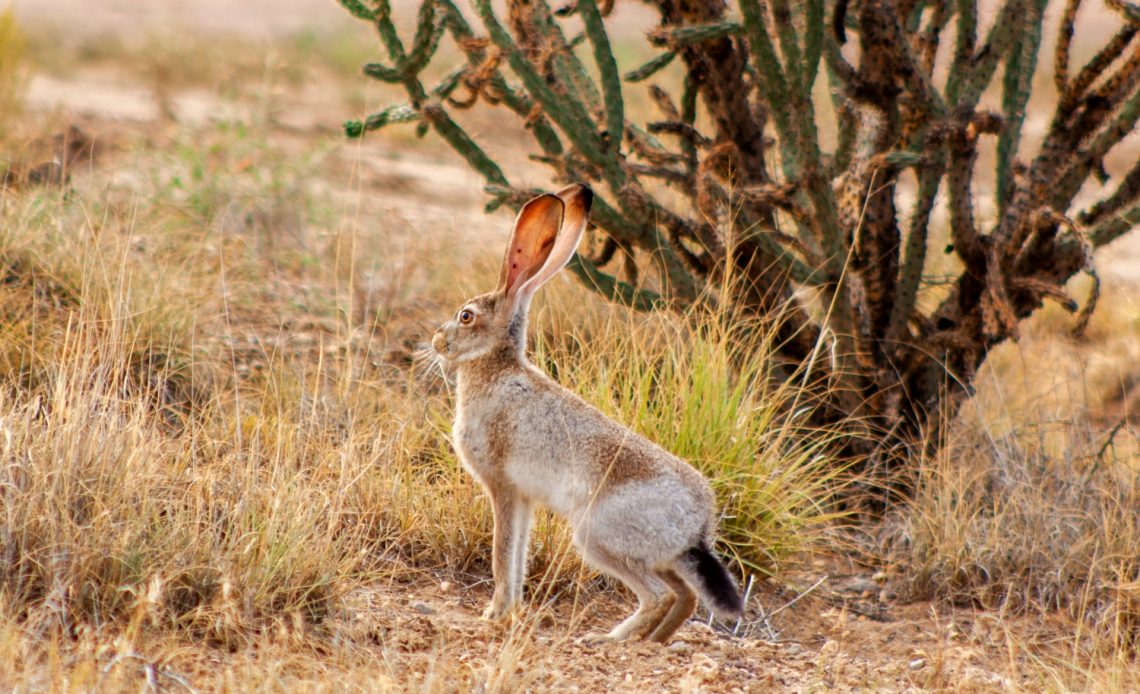

We’re here to help! Wild Yards is a completely free website that is 100% dedicated to helping you create a wildlife-friendly, sustainable yard. Read more
WildYards is reader-supported. When you buy a product through a link on our site, we may earn a comission. Every product is independently selected by our (obsessive) editors and our reviews are unbiased and objective. Read more about our mission or our privacy policy.
Food can be hard to come by in the desert landscape. Most animals there are carnivorous or omnivorous, meaning their diet is comprised, at least in part, of other animals. But vegetation plays a vital role in a desert animals’ diet, too, in large part because plants contain valuable moisture. Cacti, in particular, are an excellent source of water in this arid environment, and the animals that live there have to use it to their advantage. But what animals eat cacti?
Birds, jackrabbits, tortoises, and javelinas commonly feed on cacti. While birds like to peck at the cacti’s fruit, jackrabbits and tortoises enjoy the spineless leaves near the base of the plant. Javelinas, on the other hand, are happy to eat every part of the cactus — spines and all!
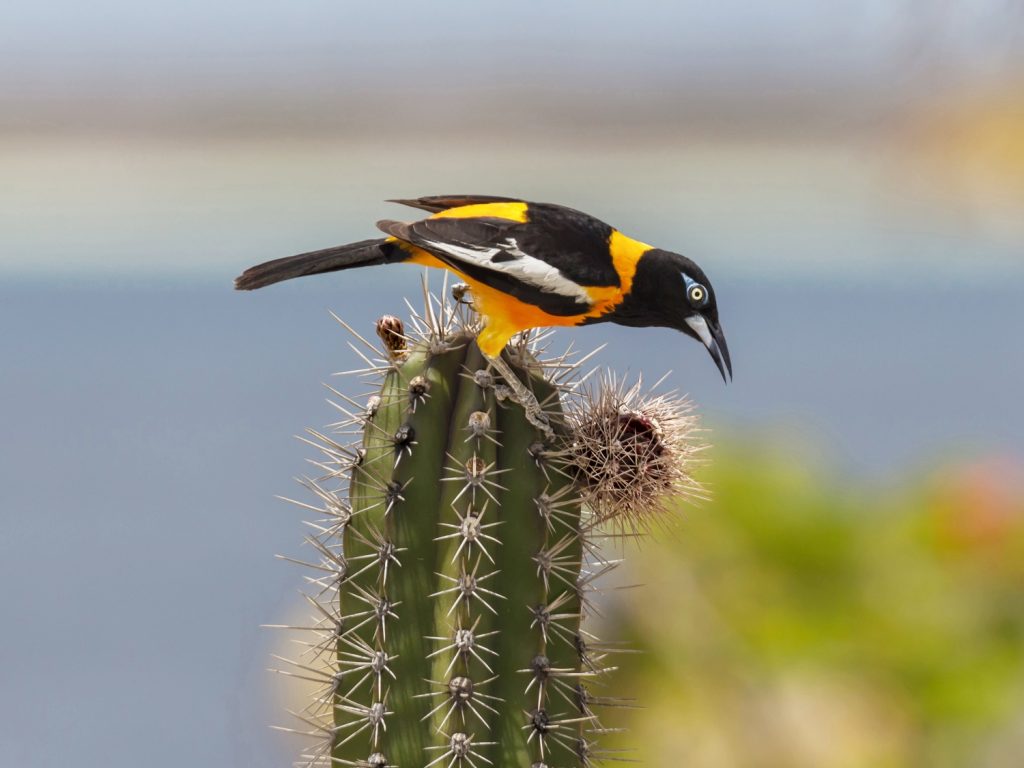
Why do animals eat cacti?
Desert-dwelling animals have adapted for thousands of years to suit the needs of, and the food provided by, their environment. Like the flora and fauna native to any other ecoregion throughout the United States, everything within the desert landscape works in harmony.
The omnivorous animals at the bottom of the food chain propagate native vegetation by carrying seeds in their fur and feathers, and by spreading them via their feces. Meanwhile, the animals at the top of the food chain prey on the animals at the bottom to prevent overgrazing, ensuring there’s enough vegetation to go around.
Even though it’s difficult for us to wrap our heads around, the animals that live in the desert are more than capable of eating cacti. And not just as a last resort. Many animals eat cacti on a daily basis.
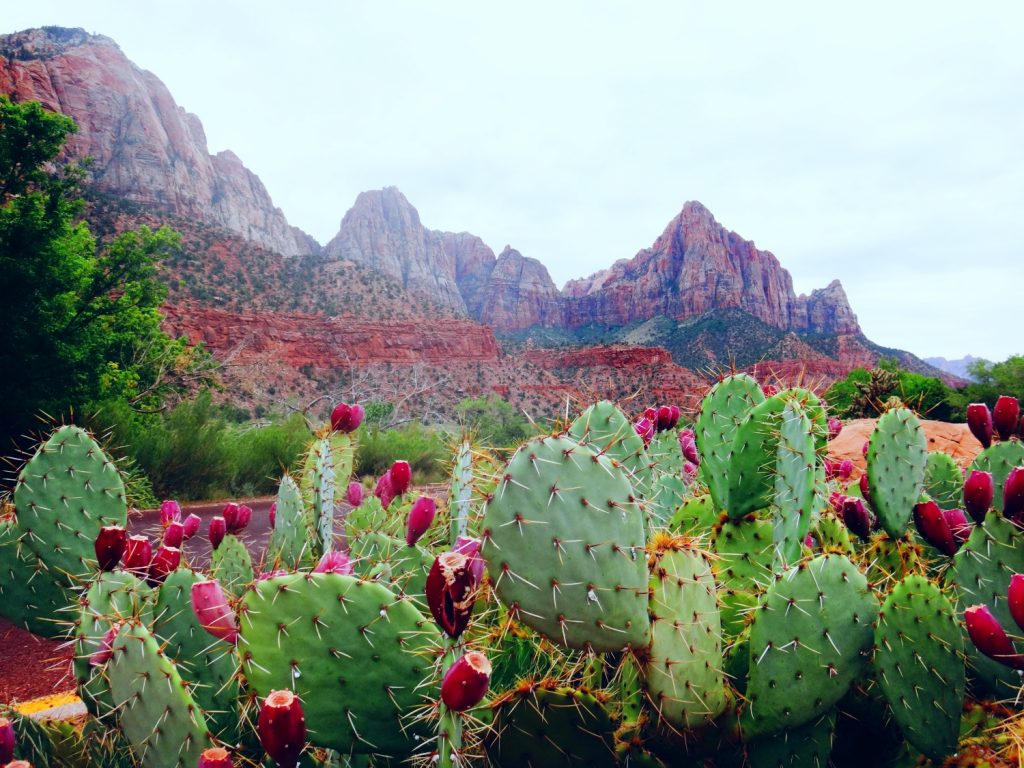
Is cactus healthy for animals to eat?
First and foremost, cactus is an excellent source of water. These plants are designed to survive long periods without rain, and their succulent leaves and inner structures allow them to retain invaluable moisture. Cacti are beneficial to many animals for that reason alone.
But cactus is also full of fiber and protein, which supports healthy digestion and gives desert animals the energy they need to survive in the harsh climate they call home. Cactus leaves are also a good source of vitamins, minerals, and fatty acids, giving desert animals the things they need to stay healthy.
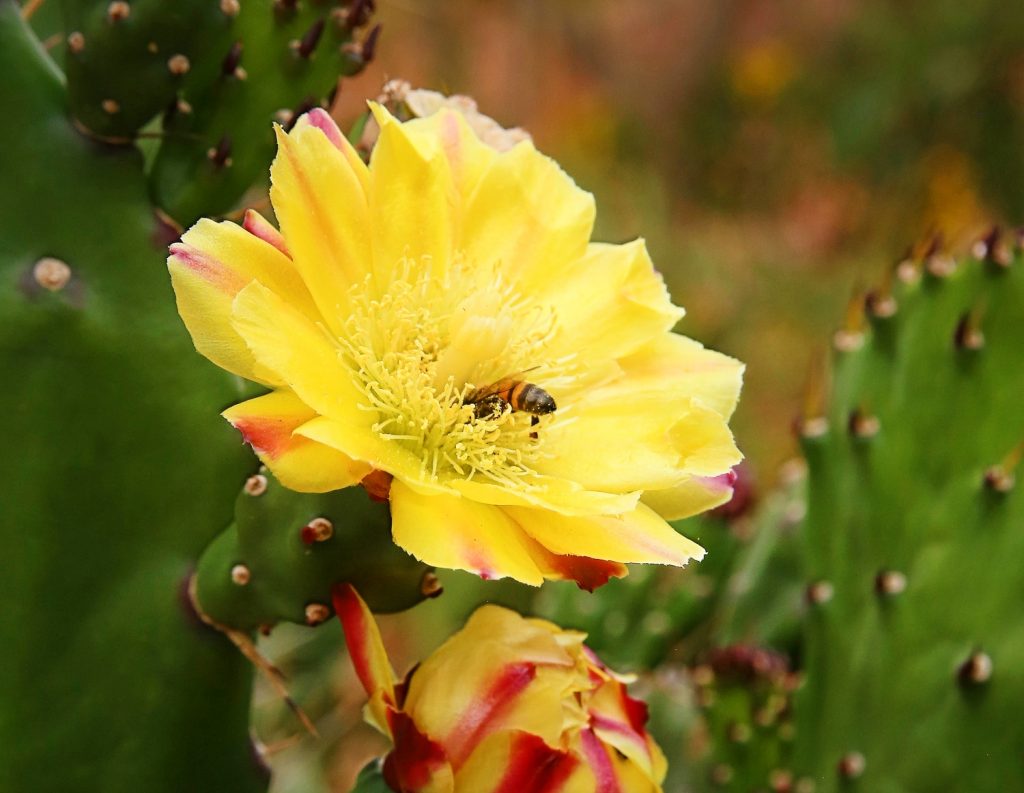
What animals like to eat cacti?
If you live in the American Southwest, or if you’ve got cactus growing in your garden, you’re most likely to see the following animals dining on these spiny plants.
Tortoises
Desert tortoises regularly make a meal of native cactus plants. These hardy reptiles rely on cacti to stay hydrated, although their ability to tolerate hydration, electrolyte, and energy imbalances also improves their chances of survival in the desert. Desert tortoises live 50 to 80 years on average, and that’s thanks in large part to their thrifty metabolisms.
Tortoises are most active during the rainy season when cacti experience the most growth. When they’re not eating cacti or hunting for insects and small mammals, tortoises like to spend their time hiding in burrows and other shady places, to stay cool and preserve moisture.
Tortoises don’t have teeth. Instead, they have powerful beaks that allow them to tear into the chewy flesh of the cacti. They grab small bites of the cacti’s fruits and lower-most spineless leaves, then swallow them whole. While cactus is especially popular with desert tortoises, other land turtles enjoy eating cactus when it’s available, too, including the Texas tortoise, the Galapagos tortoise, and the three-toed box turtle.
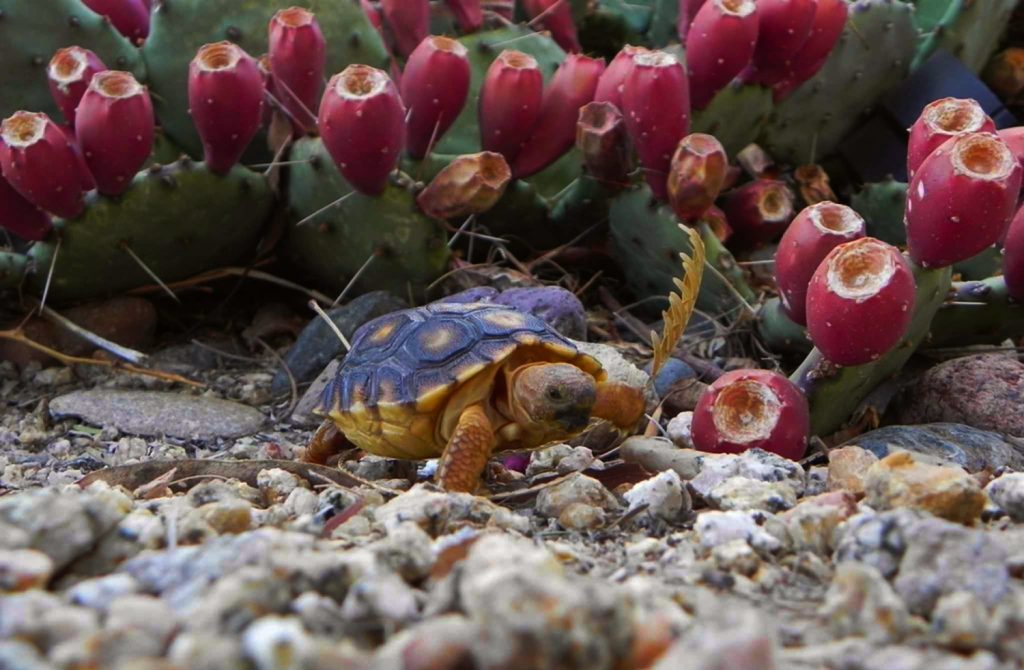
Javelinas
Also known as the peccary, the javelina is a small hog-like animal with a large head, a round, hairy body, and strong tusks. These scavengers spend most of their time rooting through the damp earth, looking for grubs and other insects to eat. Javelinas resemble and are often confused for razorback hogs. However, javelinas are much smaller and leaner by comparison.
Javelinas have scent glands under their eyes and on their backs that they use to mark their territories and each other. Because these animals are short-sighted, covering themselves in this scent makes it easier for them to keep tabs on one another as they forage for food. The smell is so strong, humans can smell it from yards away, earning them the nickname “skunk pigs”.
As omnivores, javelinas enjoy a diet that includes meat and vegetation. These animals prefer to eat bugs, but will also consume small animals like toads and lizards whenever possible. In addition to these proteins, they consume a good deal of roughage. Roots, grasses, and fruits make up the bulk of their fiber, and their strong jaws and tough mouths enable them to eat prickly pear cacti, even the mature leaves that are covered in sharp spines.
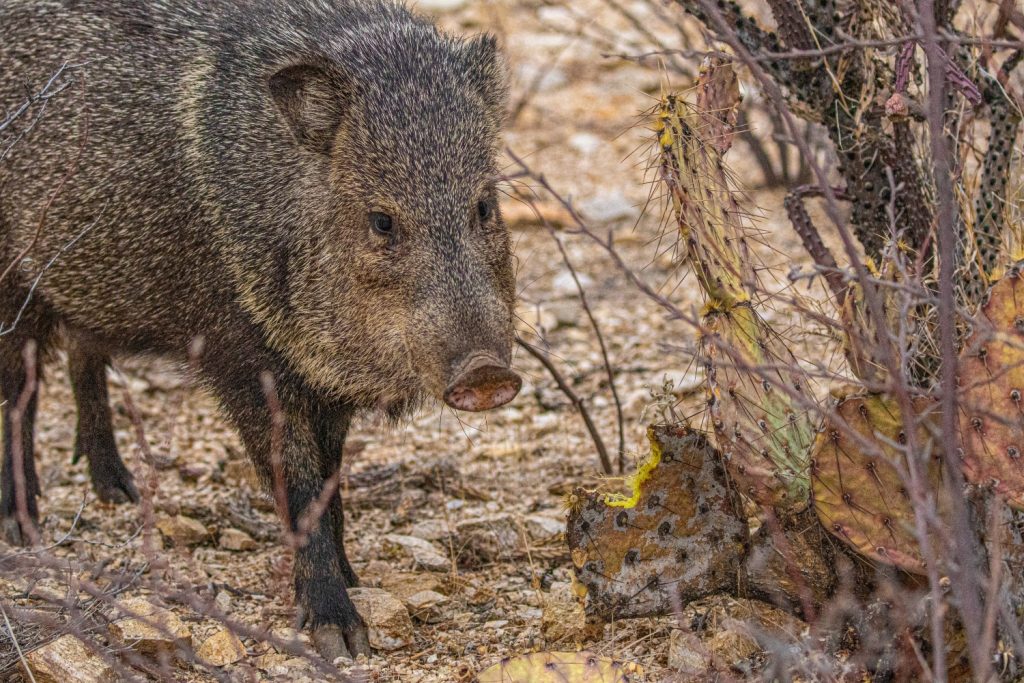
Coyotes
When we think of coyotes, we picture skilled predators who stalk smaller animals and go in for the kill when their prey least expects it. And, to be sure, coyotes are more than capable of hunting other animals. They’ll even team up in pairs to capture large prey, relying on visual cues to take the unfortunate animal down.
But coyotes are actually omnivorous and will eat desert grasses and cacti, even if these plants don’t make up a huge percentage of their daily diets. In the desert, cacti are too rich in moisture for most animals to turn up their noses at. So coyotes rely on them to stay hydrated.
Like tortoises, coyotes prefer to eat the delicate spineless lower leaves of the cacti, but they’ll pick at the fruits, too. In addition to cacti, coyotes also eat the bean pods of the mesquite tree, a common desert shrub that thrives in hot, dry regions thanks to its extensive root system.
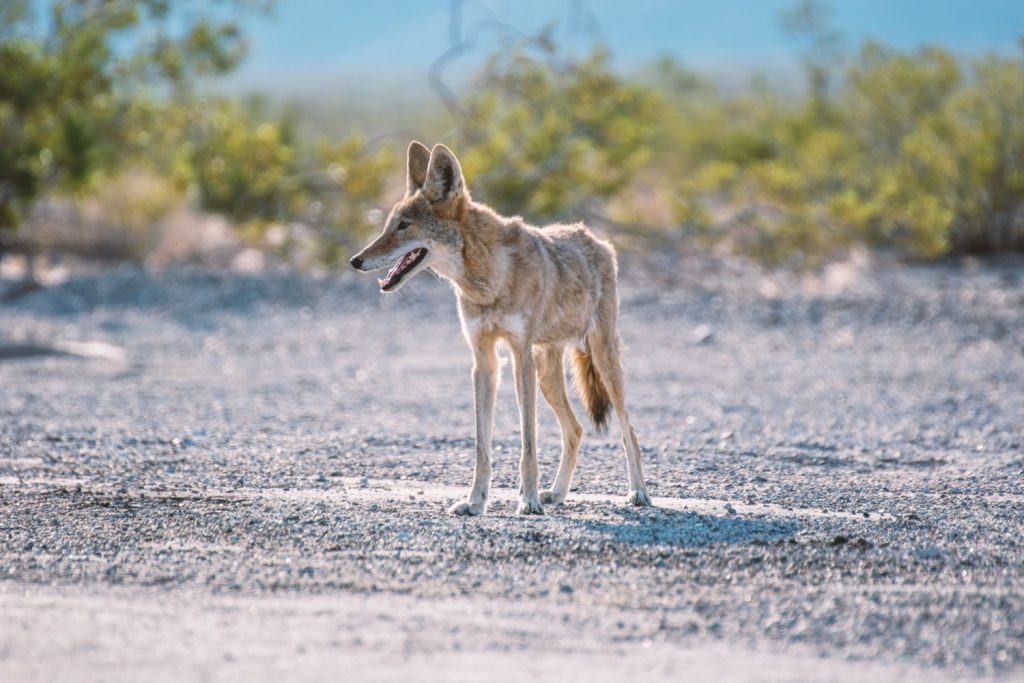
Birds
Many birds also enjoy nibbling on prickly pear cacti. They prefer to snack on the fruits of the plant, but when these aren’t available, they’ll eat the leaves instead. Obviously, birds don’t have teeth, so they can’t chew. However, because they’re able to take such small mouthfuls, they can nibble in between the spines of mature leaves, allowing them to enjoy most of the cactus plant.
While birds certainly enjoy prickly pear cacti, they will peruse a variety of other cacti, especially during the flowering season. Birds enjoy snacking on flower buds because they’re an excellent source of pollen and nectar. The former provides birds with a good supply of protein, while the latter gives them carbohydrates needed for fast energy.
Just about any desert bird can be found perusing cactus plants for something to snack on. But Gila woodpeckers, in particular, love to consume cactus fruits. They even make their homes by hollowing out large saguaro cacti.
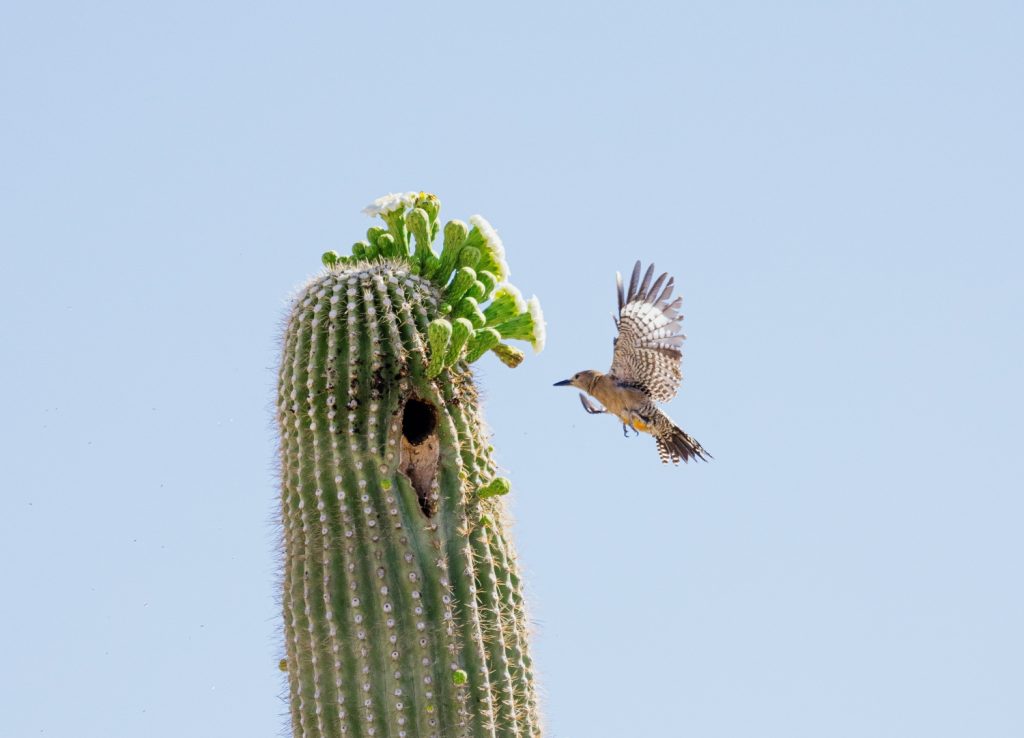
Jackrabbits
Jackrabbits are built for survival. Their keen eyesight allows them to spot predators lurking in the distance, their strong back legs allow them to flee at a second’s notice, and their large ears allow them to dissipate heat, keeping them cool in the heat of the desert.
Like other lagomorphs, jackrabbits have relatively high metabolisms. They must spend most of their waking hours searching for food, and cactus is a ready source of it. Jackrabbits select the tender, moist lower leaves. They also nibble on cactus fruits and flowers, at least the ones that are low enough to the ground for them to reach.
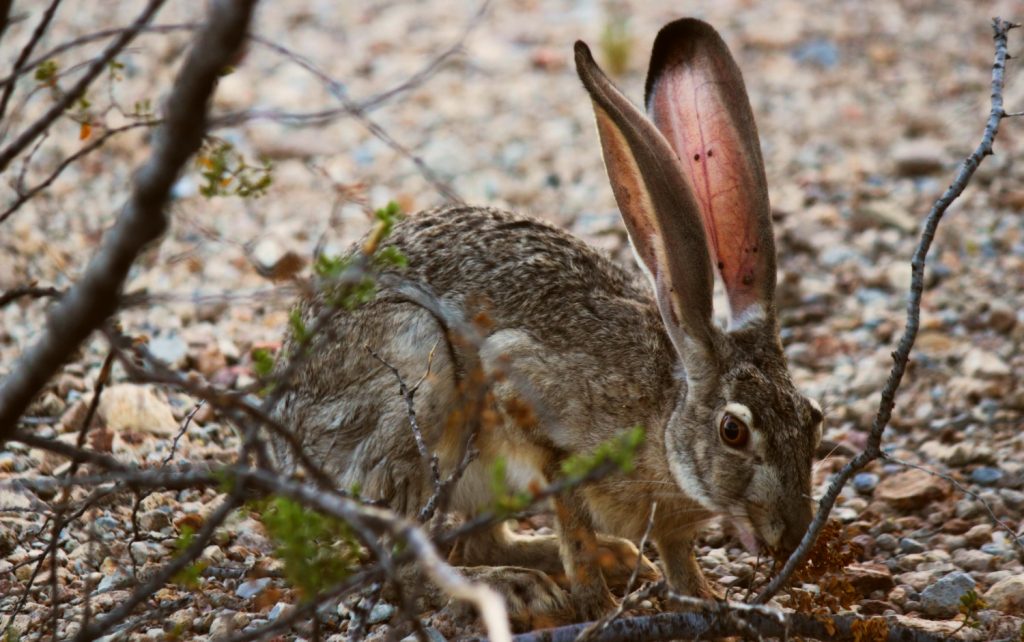
Bats
Okay, so bats don’t actually eat cactus leaves. Their mouths are too small and too delicate to tolerate the plant’s unforgiving spines. But they love eating the prickly pear cacti’s fruits and are more than happy to feed on the flower’s pollen and nectar.
Even though bats don’t consume as many parts of the plant as other animals do, cacti help feed bats by attracting the insects they prey on. Mosquitoes, moths, and other flying bugs are drawn to the cacti’s flowers. When the buds bloom, insect levels surrounding the plant skyrocket, giving local bats plenty of opportunities to eat.
Kangaroo Rats
Long-legged, sand-colored rodents that hop much like kangaroos, kangaroo rats eat mostly seeds. These tiny critters spend their time storing seeds up for later on when food becomes scarce. However, in addition to seeds, kangaroo rats will also eat flowers, stems, leaves, and fruits, including those of native cacti.
Kangaroo rats eat cacti for the same reason most of the other animals mentioned here do. First of all, it’s full of moisture. Second of all, it’s one of the few plants sturdy enough to survive the desert landscape. So, really, they haven’t got much choice.
Kangaroo rats also feed on other desert plants, including purslane, ocotillo, mesquite, and creosote bush. However, it’s worth noting that although these rodents may eat these plants, they prefer to simply collect the plant’s seeds, instead.
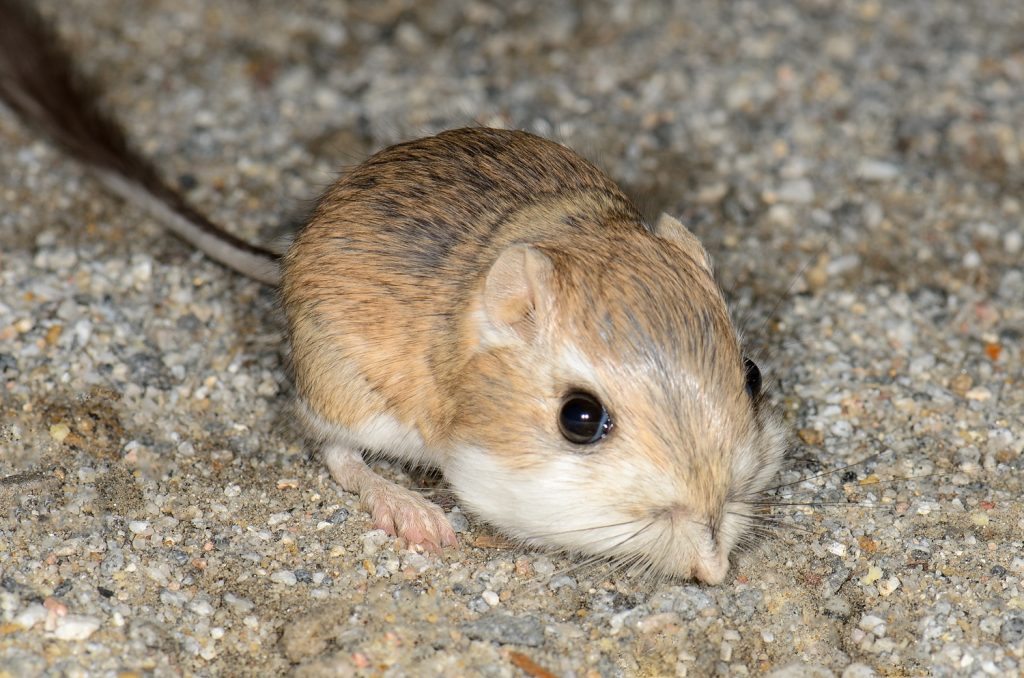
Squirrels
Desert squirrels are just about as cute as you’d expect, but don’t let their cuddly exteriors fool you. These little guys can be tough when they need to be. Dessert squirrels have adapted, the same as any other desert critter, and will make do with what food is available. Some have even been observed killing and eating rattlesnakes.
As omnivores, squirrels eat a variety of foods. They prefer nuts and seeds but will enjoy insects, small mammals, flowers, and fruits, too. Cacti are a good source of vegetation for squirrels. And, since they’re such skilled climbers, they have no trouble navigating the cactus plant, avoiding prickly spines to reach the parts they crave most.
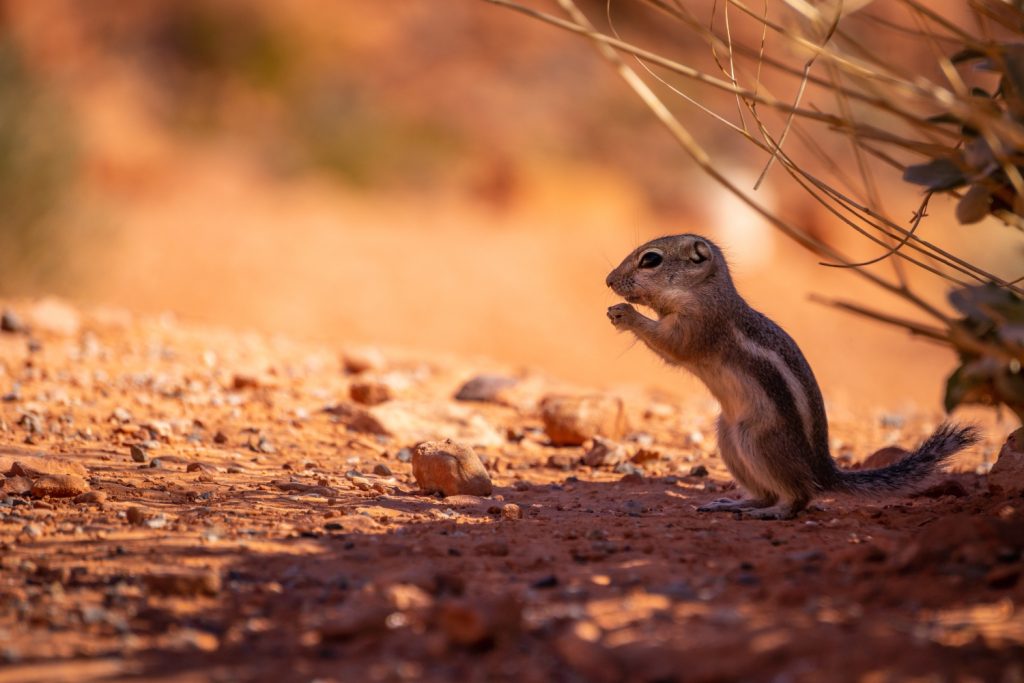
Cottontail Rabbits
Like their relative, the jackrabbit, cottontail rabbits will also eat cacti. Usually, these creatures go for the lower-most leaves, the youngest new growth of the plant that hasn’t yet developed the unwelcoming spines. But cottontails also enjoy nibbling on the cacti’s flowers and fruits, if they can get to them.
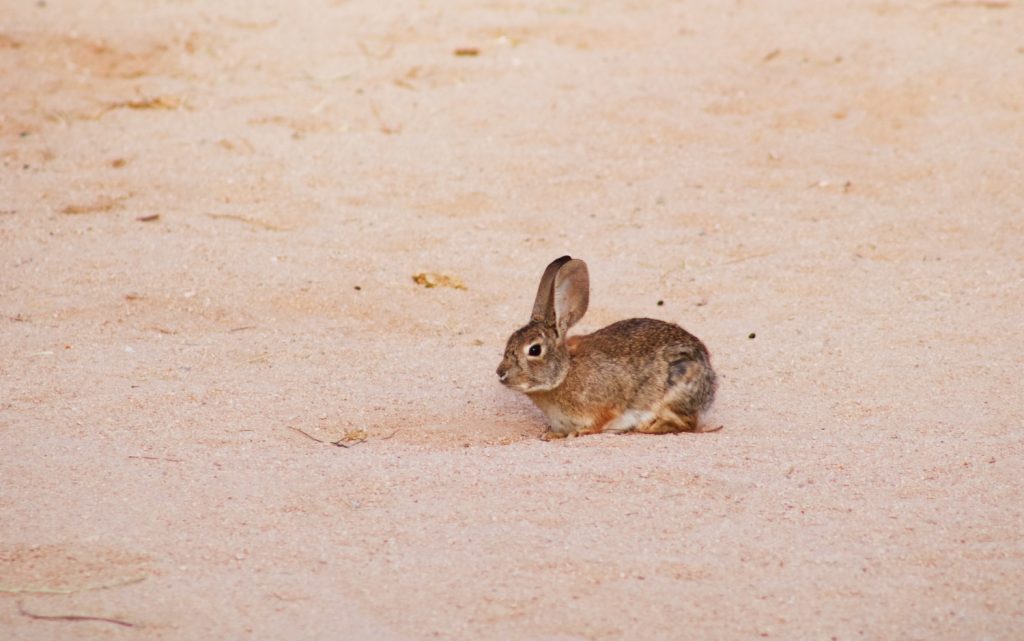
Prairie Dogs
Prarie dogs burrow underground. Being able to hide from the harsh sun allows them to retain moisture, but water is still critical, and cactus remains one of the best sources for desert animals. Prairie dogs rely on cacti to stay hydrated but also benefit from the plant’s nutritional value.
Like bats, prairie dogs take advantage of the insects that like to loiter around cactus plants. The average prairie dog’s diet consists mostly of vegetation and bugs, so you can imagine how popular cactus plants are for these sociable critters. Plus, the sharp spines of the cactus offer prairie dogs protection from predators as they eat.
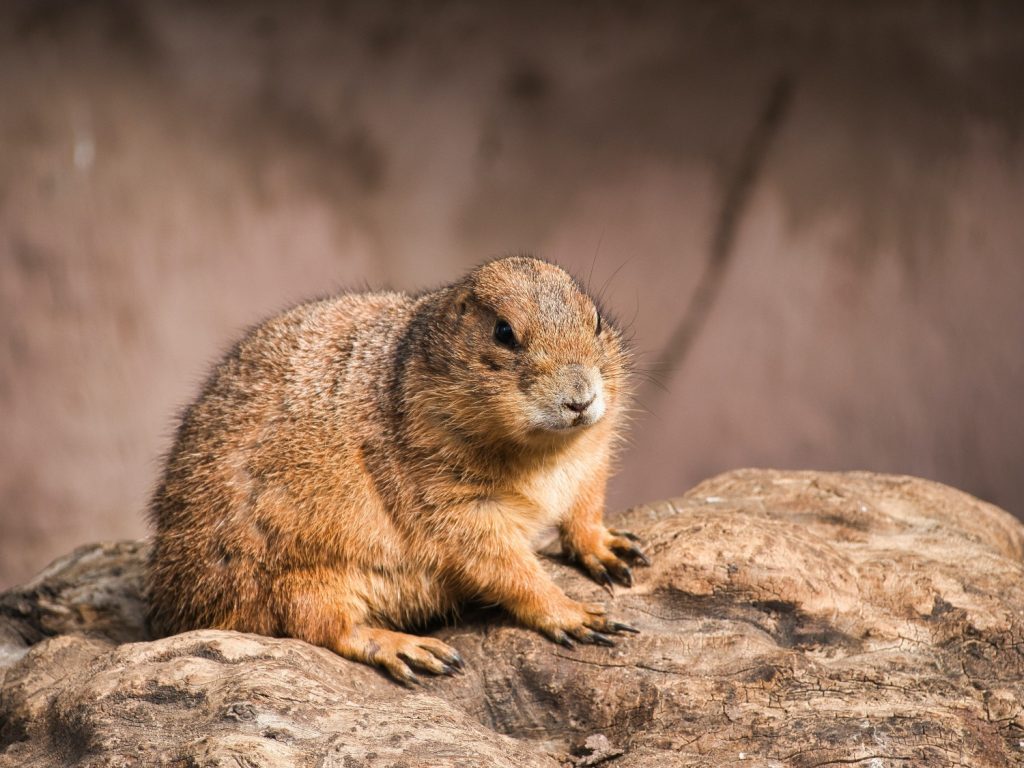
Cattle
Ranchers in Arizona, New Mexico, Texas, and other desert regions sometimes burn the spines off of the prickly pear cacti in their pastures for their cattle to graze on. The prickly pear cactus regenerates quickly, especially compared to the incredibly slow-growing saguaro cactus, so it’s an excellent source of food for hungry cows when others are hard to come by.
Cows enjoy the taste of prickly pear cacti and may eat the young leaves of the plant even when other food sources are plentiful. Offering prickly pear cacti to cows doesn’t just give them something to eat, but it also allows their native pasture to regrow. The average cow spends 6 hours a day eating and 8 hours chewing their cud. So having plenty of food on hand is critical to keeping cattle healthy. Cactus is easy for cows to digest, and can help alleviate the burden on ranchers when times are tough for their herd.
Insects
Though they technically aren’t animals, insects also rely on cacti to survive. Ants, beetles, moths, and caterpillars are sustained by the cactus plant’s excellent source of pollen and nectar. These substances provide insects with the protein and carbohydrates needed to survive. And it’s not a one-sided relationship. Insects benefit cacti (and other desert plants, too, for that matter) by assisting in pollination and seed dispersal.
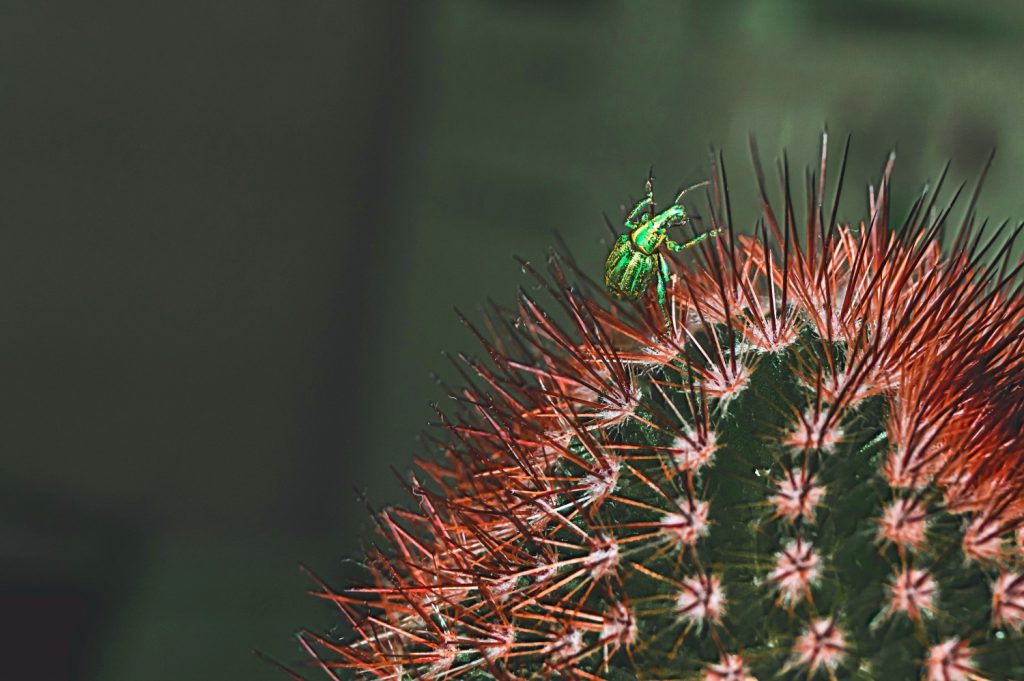
Should you feed native wildlife cacti?
Desert animals rely on cactus to survive, but many animals eat cactus simply because they like the way it tastes. Cactus pads are easy to find nowadays at most grocery stores in the produce section. But they can also be purchased online. Keeping cacti out for your native wildlife gives them an alternate food source to enjoy, and is especially helpful when water is scarce.
The desert is a tough place, but the animals who live there are tougher! As it turns out, there are many animals that eat cacti. Support your local ecosystem, whether you live in the desert or not, by planting cacti in your backyard or garden today.
